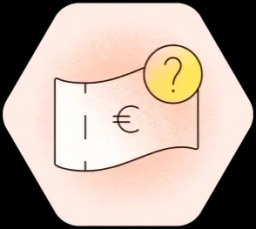OFFSET
Investing in the future.
We've been offsetting our emissions by investing in certified climate protection projects. We compensate for every ton of CO produced in our logistics and packaging, as well as through employee commuting. In addition, we have implemented an internal CO2 tax across all departments to further accelerate our reduction efforts.

Why we offset emissions.
Simply throwing money at emission challenges is not what we consider a sustainable solution. However, offsetting can open doors towards a lasting eco-friendly future – provided there is a long-term plan. We have such an offsetting-plan and it follows two simple steps with far-sighted goals.
Act now!
What carbon footprints do we leave behind? Which emissions can be avoided in the long run and how? And which emissions are absolutely Not to lose any time finding answers to these questions, we use offsetting as a quick but temporary solution. Investing in immediate climate action and projects helps us to neutralize our emissions as of now.
Raise financial awareness.
A voluntary internal carbon tax: By using offsetting to put a price tag on every ton of CO2 emissions we are responsible for at Redcare Pharmacy (and breaking them down as small and specifically to individual departments as possible), we raise awareness of the financial value of climate action. Incorporating the economics of emissions reductions can act as an igniting spark for change in the corporate world. At Redcare Pharmacy, this approach has already led to far-reaching management decisions and positive effects in terms of climate cost reduction. Indeed, we managed to reduce our energy related emission way faster than originally planned.

Our offsetting choices.
Our offsetting choices.
To ensure that compensation measures have a clear added value for the environment, we need to make sure that they work. Because not all offsetting certificates are equal. Some are criticised for not working as good as promised, some don’t work at all.
But we are health experts, not compensation experts. This is why we work together with partners who know best about offsetting. They help us identify projects that meet our requirements, and provide us access to the project developers. As a result, we gain insights that confirm that our investments are bearing fruit and actively help stopping climate change.
Ongoing offset
When we launched our ambitious climate approach in 2020, we primarily offset by investing in projects that prevent new CO2 emission. Since then, we are shifting from avoidance- to removal-credits step by step. The difference between the two is simply explained:
While avoidance-credits aim to stop the ongoing negative trend in CO2 emissions, removal-credits focus on actively removing CO2 that is already in the atmosphere from the air and storing it permanently, to create a positive trend. Since 2024 via offsetting solely by removal projects.
Or, to put it even more simple
Instead of trying to do less harm to our planet, the idea is to try and heal it. Because we believe, offsetting can only be part of net zero strategies and a 1.5° scenario through carbon removal.





